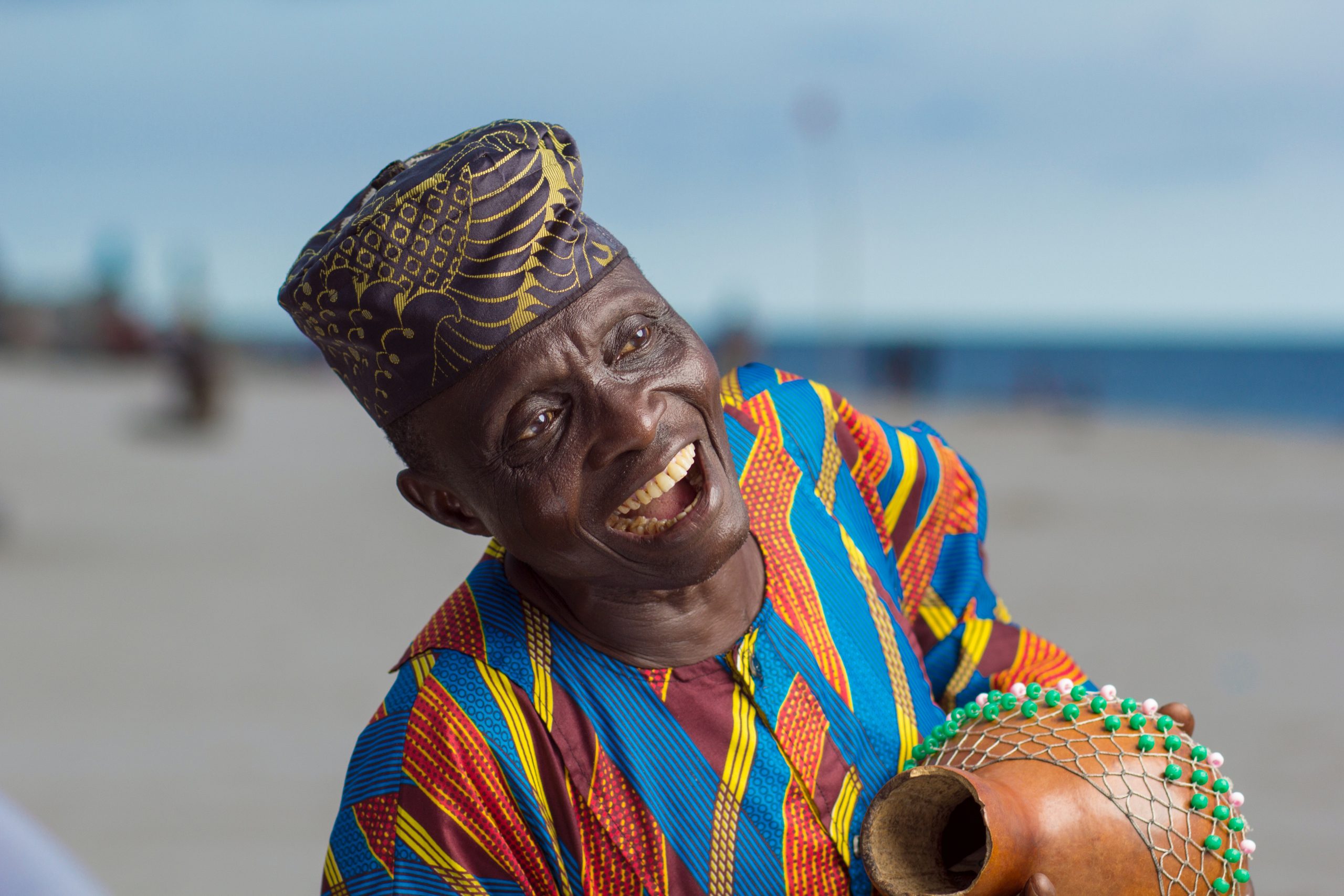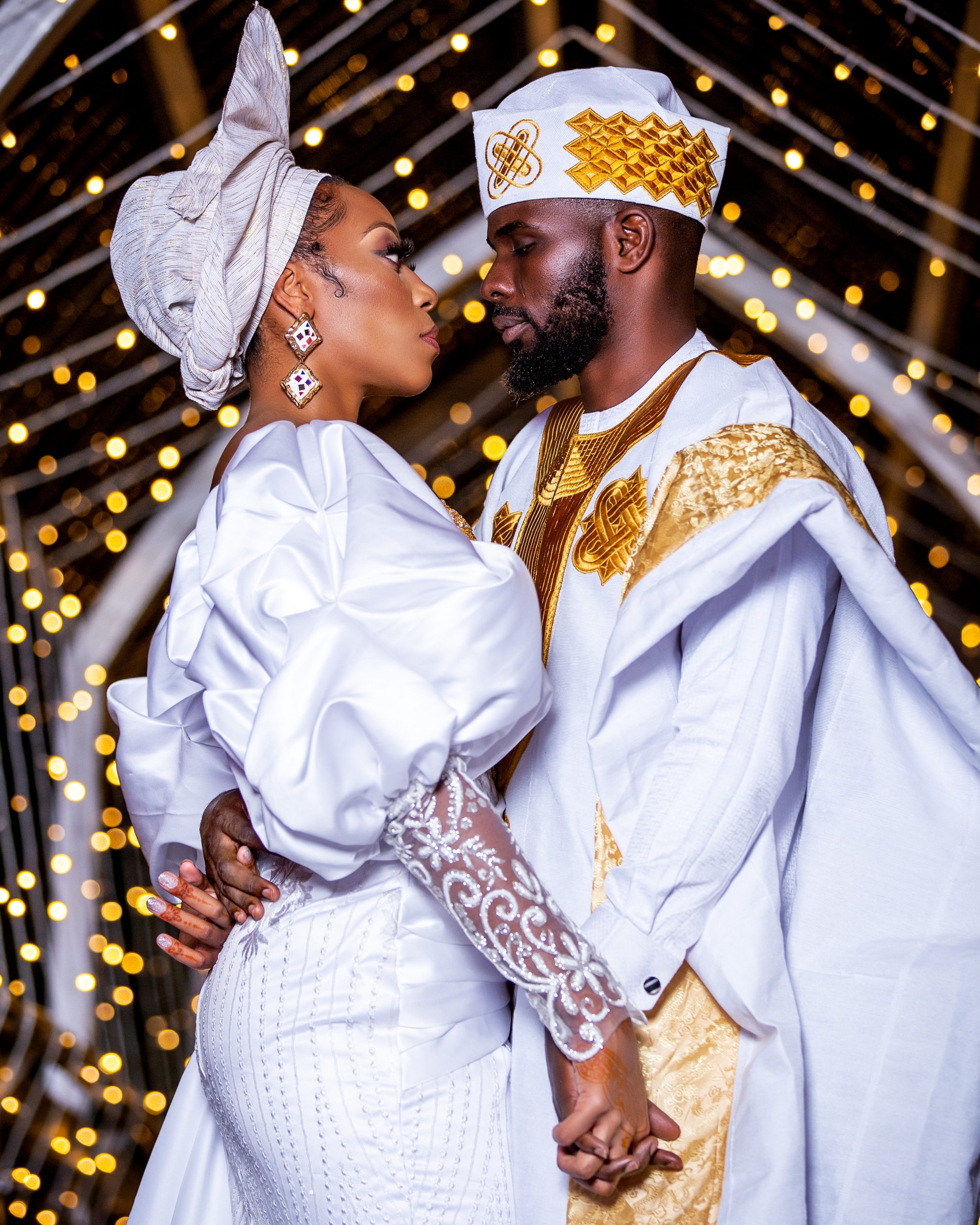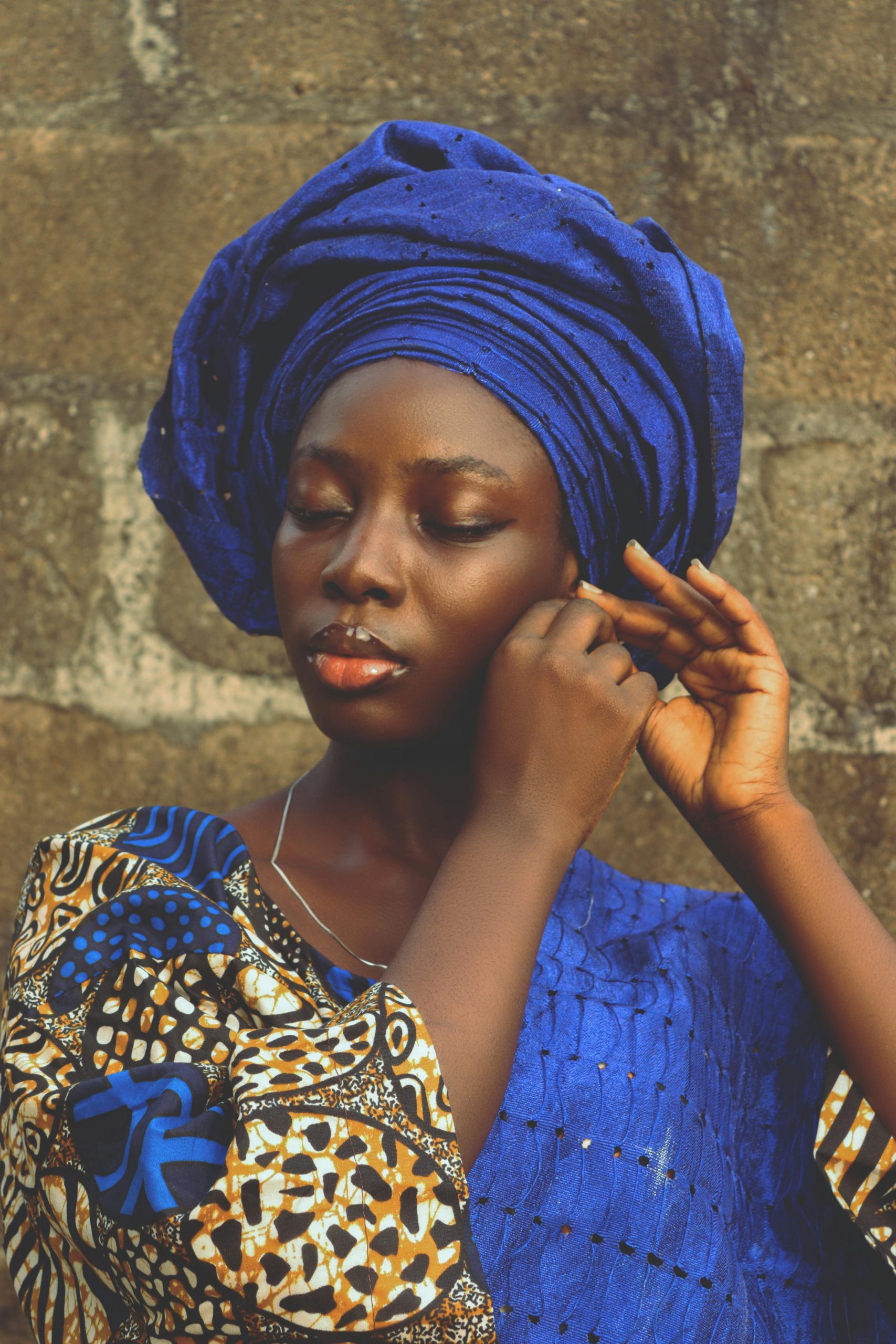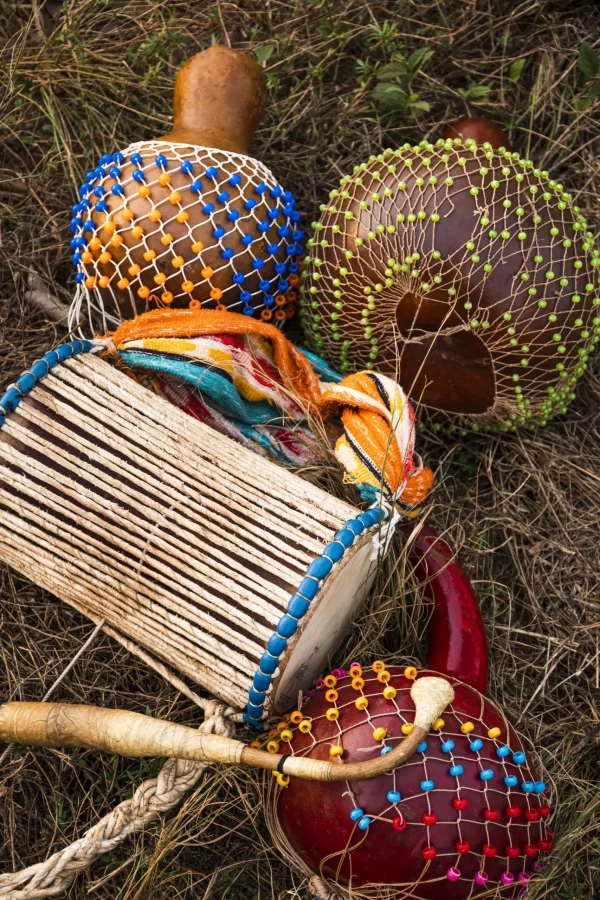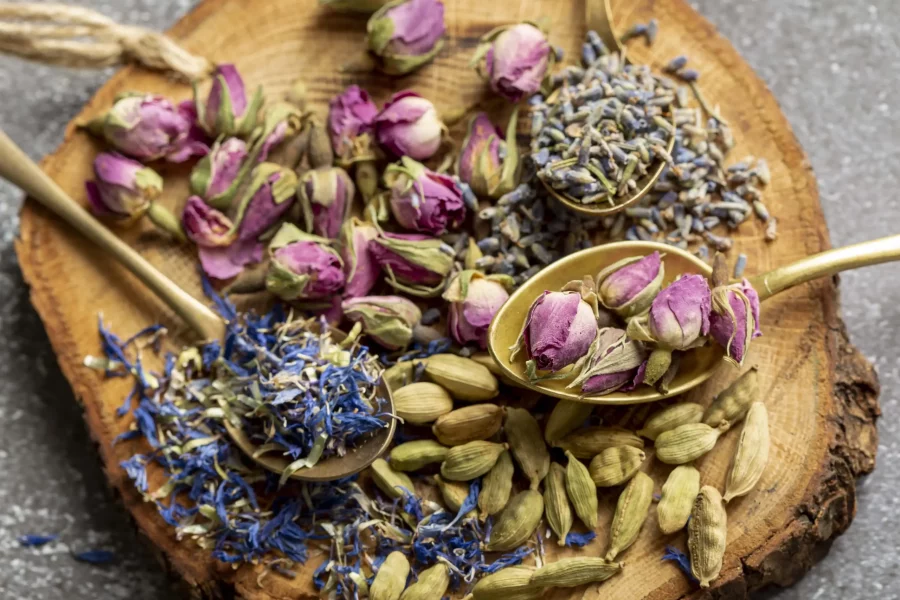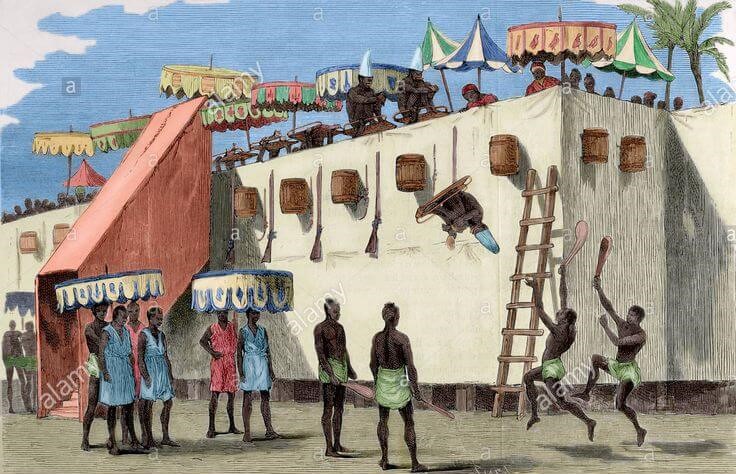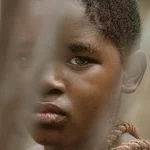DiscoverYoruba.com is your one-stop for embracing Yoruba culture, entertainment, and history unfolding.
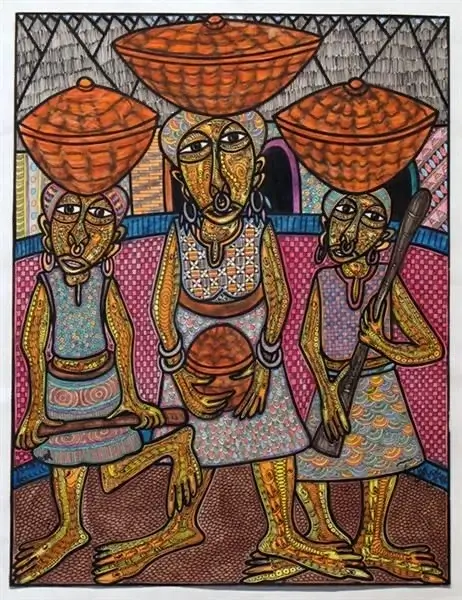
Table of Contents
Yoruba mythology is surrounded by powerful gods and goddesses called Orishas. As you may know, they’re supernatural beings with powers over nature, love, and everything in between. The divine creator, Olodumare, is considered the supreme deity, like Zeus in Greek mythology. Rituals, ceremonies, and divination play vital roles in spiritual practices as they are the ways used to worship and communicate with the gods.
The beliefs are about worship, devotion, and a whole mood of celebrating life’s journey with these revered supernatural beings.
According to the teachings of these religions, the orishas are spirits sent by the supreme creator, Olodumare, to assist humanity and to teach them to be successful on Ayé (Earth). Rooted in the native religion of the Yoruba people, most orishas are said to have previously existed in òrún—the spirit world—and then became Irúnmọlẹ̀—spirits or divine beings incarnated as human on Earth. Irunmole took upon a human identity and lived as ordinary humans in the physical world, but because they had their origin in the divine, they had great wisdom and power at the moment of their creation.
Wikipedia
Overview of Yoruba Mythology and Gods
In Yoruba mythology, it is believed that there are as many orishas as you can think of, plus one, although Yoruba tradition often suggests there are 400+1 orishas (a sacred number).
Let’s explore some of the most known of the Orishas
- Olodumare: Olodumare is the all-powerful being, the supreme creator that sent the Orishas to assist humanity.
- Ogun: The warrior, Ogun, is like the powerful spirit of metalwork. Think of Ogun as the celestial blacksmith and warrior. Warriors and anyone facing a battle, be it physical or metaphorical, call on him for strength and protection. He is believed to have prepared the way for the Orishas using a metal axe with help from a dog.
- Yemoja: The water queen, Yemoja, is like the goddess of all oceans and rivers. She is known as the mother of the Orishas and humanity. She has a nurturing side, protecting and caring for everyone. As the guardian of water, she protects those travelling on the seas and rivers. She’s also there for mothers and children, ensuring safe journeys and a nurturing environment. She is the goddess of the moon.
- Shango: Meet the thunder god with a fiery temper, Shango. He uses lightning bolts on demand and is known for his powerful and stormy presence. During his mortal life, he was the third king of the Oyo kingdom and was praised as the most powerful king the Yoruba kingdom ever had.
- Oshun: Picture Oshun as the goddess of love, fertility, and rivers. She represents femininity, purity, and fertility. Oshun, the goddess of love, steps in as the guide for matters of the heart. She’s there for matters of romance, fertility, and emotional well-being. During her mortal life, she was the queen to King Shango.
- Esu: Esu is the trickster and bringer of chaos, although he is the enforcer of laws and order. He always shows the two sides to every situation, and by setting order, he becomes free to bring mischief. Imagine Loki from Norse mythology—always stirring the pot, bringing chaos and unpredictability to the table.
- Oya, The Wind of Change: Oya, associated with winds and storms, is another cosmic force for balance. She brings the winds of change, clearing away the old to make room for the new. She is also a river deity who blesses followers with children.
- Olokun, – Keeper of the Deep: Olokun, the deity of the deep sea, plays a role in maintaining the balance of all the waters and also provides health and wealth to worshippers.
- Obatala: Obatala, often associated with creation, was believed to be assigned the task of creating the earth but failed after being drunk on palm wine, as the myth goes. Instead, he became the sculptor of humans.
- Oduduwa: He was the brother of Obatala, who ended up creating the earth upon the waters. He is seen as an orisha and also the founder of the Ife empire.
In Yoruba mythology, these Orishas aren’t believed to be only watching from afar; they’re actively involved in the daily lives of the devotees.
Importance of Orishas and their Roles in Yoruba Mythology
There are numerous problems humanity faces that require us to turn to the Orishas for help. Each Orisha has a unique role in shaping the cosmic order by actively influencing life and assisting with every problem we encounter. It’s about a careful orchestration of elements to ensure that the cosmic order remains intact. Their interventions serve as a reminder of the delicate balance that exists in both nature and human affairs. Here are a few of their roles:
Guides and Guardians:
Orishas, in Yoruba mythology, serve as guides, helping people navigate life’s challenges. Whether it’s Ogun offering strength in battles or Oshun bringing love to the hearts of the people, they guide our spirits in times of need.
Life Events:
From birth to death, orishas are part of life’s major events. Oshun might be called upon during childbirth, and Shango might be summoned during ceremonies marking life transitions.
Life events in Yoruba culture aren’t entirely personal; they involve a spiritual dimension. Orishas are needed to guide, protect, and bless people throughout their life journey. We see this in:
- Birth: When a baby comes into the world, there’s often a ceremony to introduce the newborn to the Orishas. Specific Orishas, like Oshun, will be invoked for blessings and protection, ensuring a harmonious entry into life.
- Naming Ceremony: Naming ceremonies are big in Yoruba culture. Orishas are consulted to guide the selection of a name, sometimes based on the circumstances of the child’s birth or the family’s desires.
- Coming of Age: Initiations into adulthood often involve connecting with specific Orishas. It’s like the divine marking of a transition, with rituals and ceremonies guiding individuals into the responsibilities of maturity.
- Marriage: Before tying the knot, couples may seek the blessings of Orishas associated with love and harmony, like Oshun. It’s like having the cosmic matchmaker approve the union.
- Death and Ancestral Connection: When someone passes away, rituals involving Orishas help guide the departed to the ancestral realm. Ancestral veneration becomes crucial, and Orishas are invoked to ensure a peaceful transition.
- Divorce or Separation: Even in challenging times, Orishas are consulted for guidance. Specific rituals may be performed to seek clarity and understanding during these transitions.
Spiritual Connection:
Yoruba people connect with the Orishas by various means. They bring their troubles for advice, blessings, or assistance through:
- Rituals and offerings
- Prayers and invocations
- Divination practices
- Ceremonial celebrations
- Initiation and ritual cleansing
Cultural Identity:
Orishas are woven into Yoruba culture, reflecting values and lessons. Orishas aren’t just spiritual figures, they are cultural symbols that represent virtues, power, and the essence of being Yoruba. Their influence in our identity is seen through:
- Symbolism in Art and Crafts: Orishas often appear in Yoruba art and crafts, showcasing their cultural significance. Sculptures, paintings, and other artistic expressions serve as a visual celebration of these divine beings.
- Language and Proverbs: Yoruba language and proverbs are infused with references to Orishas. Phrases and expressions draw upon the wisdom or characteristics of specific deities, creating a linguistic connection to the divine.
- Traditional Clothing and Adornments: Attire and accessories in Yoruba culture are influenced by Orishas. Specific colours or symbols associated with certain deities are incorporated into traditional clothing, making a visual statement about our cultural identity.
- Festivals and Celebrations: Cultural festivals often revolve around honoring and celebrating specific Orishas. These events become community expressions of identity, with rituals, music, dance, and vibrant displays showcasing the cultural tapestry.
- Moral and Ethical Values: Stories and lessons from Yoruba mythology, featuring the Orishas, contribute to the morals and ethics of the culture. The virtues represented by these deities become guiding principles for individuals and the community.
- Balancing Act: The Orishas also maintain balance in nature and human affairs. Shango might unleash a storm to cool off heated situations thereby influencing weather and events.
Yoruba Religious Practices and Rituals
Yoruba religious practices and rituals are a beautiful collection of ceremonies, invocations, and community expressions that create a connection with the divine.
- Offerings and Altars: Worshippers create altars adorned with images or symbols of Orishas. Offerings like fruits, food, and symbolic items are presented as a way to show respect and seek blessings.
- Prayers and Invocations: Prayers are a fundamental part of Yoruba religious practices. Worshippers communicate with the Orishas, expressing gratitude, seeking guidance, or asking for blessings in various aspects of their personal lives.
- Divination: Divination helps to form a means to receive wisdom from the Orishas. Cowrie shells, divination trays, or other tools are used by skilled diviners to gain insights into the will of the Orishas and receive guidance on important decisions.
- Festivals and Ceremonies: Yoruba culture comes alive during festivals dedicated to specific Orishas. These celebrations involve music, dance, and rituals, creating a lively atmosphere of community connection and divine presence.
- Initiations: People undergo initiations into specific Orisha traditions. This involves rituals and ceremonies to establish a deeper connection with a particular deity, to mark a commitment to the spiritual path.
- Egungun Festivals: Celebrated to honor ancestors, Egungun festivals involve masked dancers representing ancestral spirits.
- Osun-Osogbo Sacred Grove: The Osun-Osogbo Sacred Grove is a UNESCO World Heritage Site and a center for annual rituals dedicated to Oshun. Pilgrims gather to participate in cleansing ceremonies and seek the goddess’s blessings.
- Ifá Divination: Ifá is a system of divination and wisdom associated with Orunmila. Priests, known as Babalawos, use divination trays and verses to provide insights and solutions to life’s challenges.
These practices in Yoruba mythology are a way of life of the Yoruba people that builds a connection to the divine.
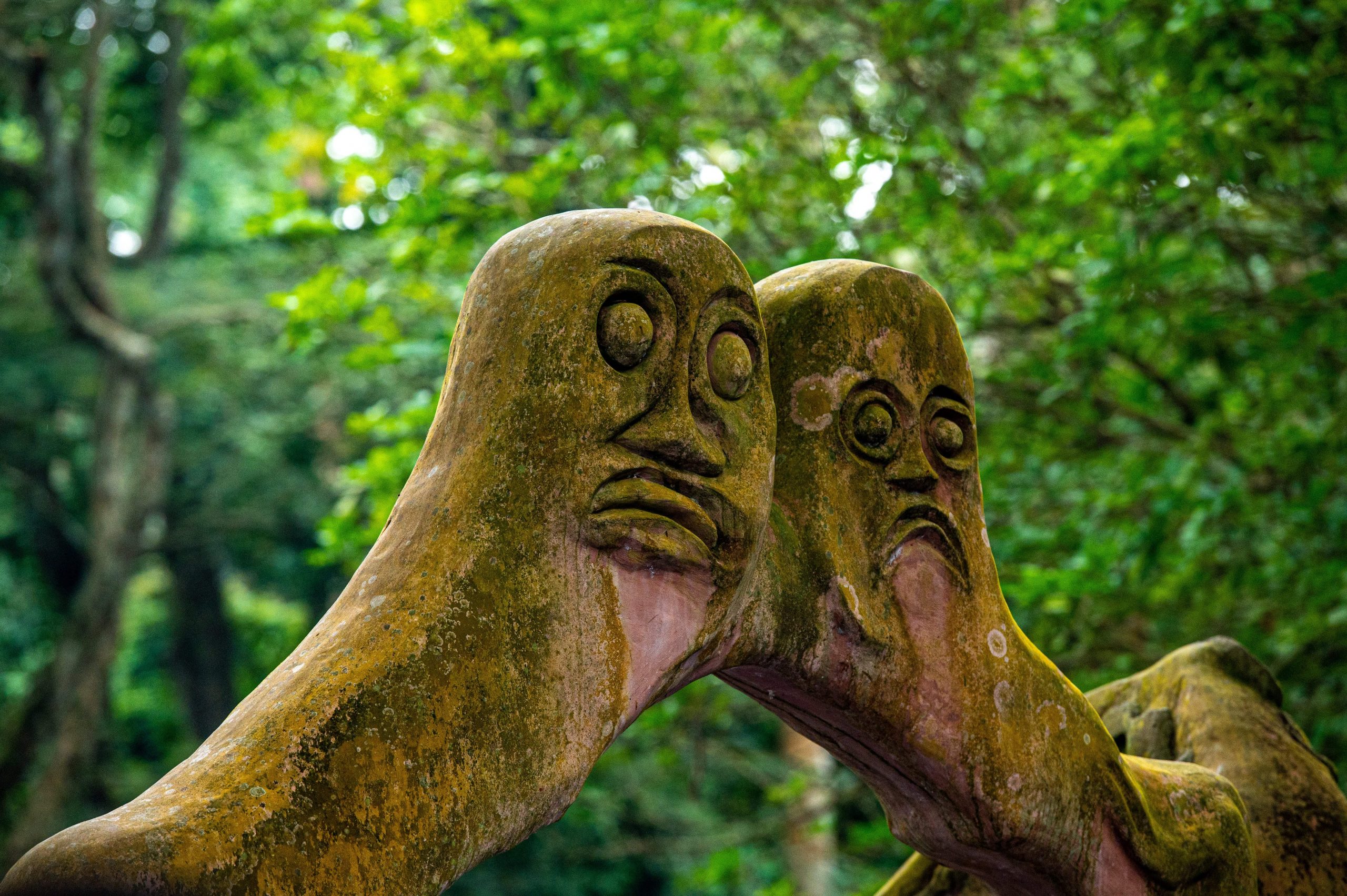
Osun-Osogbo Sacred Groove
Influence of Yoruba Religion on Diaspora Cultures
- Santería: Santería, originating in Cuba, has a deep influence from the Yoruba mythology and religion. It emerged among African slaves, blending Yoruba traditions with Catholicism. The religion revolves around Orishas, Yoruba deities syncretized (merged) with Catholic saints. Santería involves intricate rituals, including drumming, dancing, and animal sacrifices, guided by priests known as Santeros/Santeras. The religion uses divination for guidance and places significance on music and dance in invoking Orisha presence.
- Candomblé: Candomblé also shows influence from Yoruba mythology. It is an Afro-Brazilian religion rooted in Yoruba, Fon, and Bantu cultures, introduced by African slaves. It features Orishas (Orixás), akin to Yoruba deities, and incorporates syncretic elements from Catholicism. Rituals involve drumming, dancing, and animal offerings to honor Orixás. Candomblé employs divination, has a hierarchical structure, and worshippers undergo ceremonies to connect them with specific Orixás. It is imperative to note that there are regional variations to this religion. Candomblé has left a lasting cultural impact on Brazil, influencing music, dance, and art, making it a significant expression of African heritage in the country.
- Vodou: Voodou, originating from West African Vodun traditions, is a syncretic religion with a significant presence in Haiti and the broader African diaspora. It incorporates Loa spirits, ancestral worship, and lively rituals with drumming and dancing in sacred spaces called hounfours. Practitioners, known as Houngans (male) and Mambos (female), serve as spiritual leaders. Vodou has played a crucial role in Haitian history and culture, and is often misunderstood due to media portrayals.
- Orisha worship or Shango baptist: Shango Baptist, rooted in the Yoruba mythology and religion, is a syncretic Afro-Caribbean faith that emerged in Trinidad and Tobago. Central to its practices is the worship of Shango, the Yoruba deity of thunder. The religion blends African spiritual traditions with Christian elements, featuring communal rituals involving drumming, dance, and prayer. Shango Baptist has spiritual leaders guiding its practices and has left its mark on the cultural landscape of Trinidad and Tobago, contributing to music, dance, and artistic expressions.
Conclusion
Yorubas are very spiritual and religious in their worship. The Orishas are loved and revered in the typical traditional setting, even to this day, and their worship has gotten mixed into the culture and traditions because of how vital this worship was in the days of old. Afterall, some things never change.
Now you know more about the Orishas and expressions of Yoruba mythology in religions of the Americas. What do you want to know more about? Feel free to ask in the comments section below!
Also, which Yoruba deity is your archetype?
Sources:
Orishas – Wikipedia
List of Yoruba deities – Wikipedia
Yorùbá Influences on Haitian Vodou and New Orleans Voodoo- Sage Pub
Shango Baptist – JSTOR
Candomblé – Wikipedia
Santeria: Its Growth and Changes as a Result of its Major Relocations – Fisher Pub

